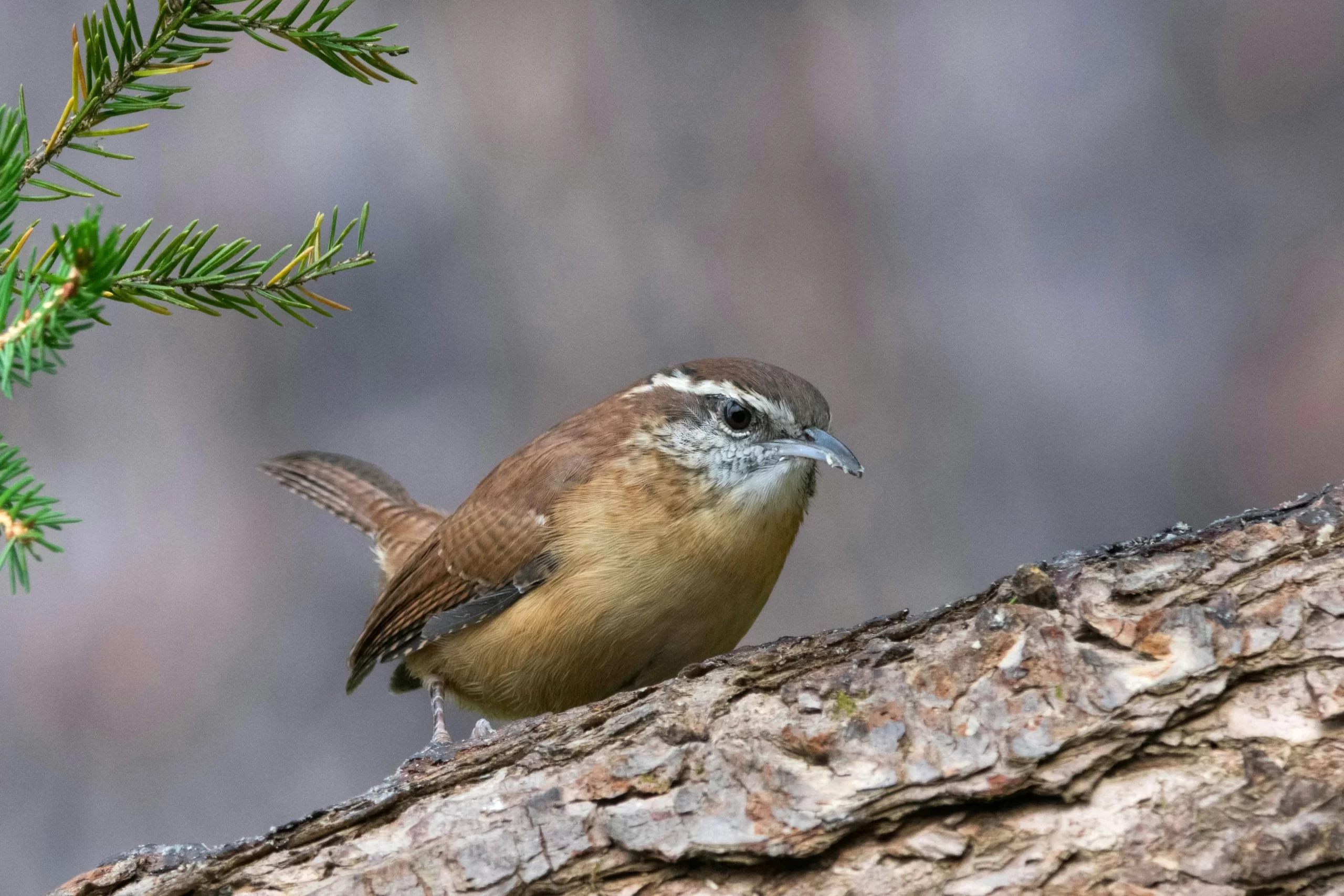Exploring the fantastic array of habitats that can be found in Florida is a dream come true for a birder. From the white, sandy beaches to the lush, green marshes, the ecosystems in Florida can accommodate a tremendous array of birds. However, there will be some days when birders just want to stay home and watch the birds in their backyards. Those who observe birds out their windows will likely notice many backyard small birds in Florida.
Yes, many small Florida birds can be difficult—if not infuriating—to identify as they constantly move around. Hummingbirds are a great example of small Florida birds. Fortunately, there is only a single breeding species of Florida hummingbird. Trying to identify some of the backyard birds of Florida can be a trying experience for beginning birders. Fortunately, I have created this guide to 10 backyard small birds in Florida to help you know which birds are visiting your property. Let’s explore some Florida backyard birds!
Table of Contents
10 Backyard Small Birds In Florida
Blue-gray Gnatcatcher
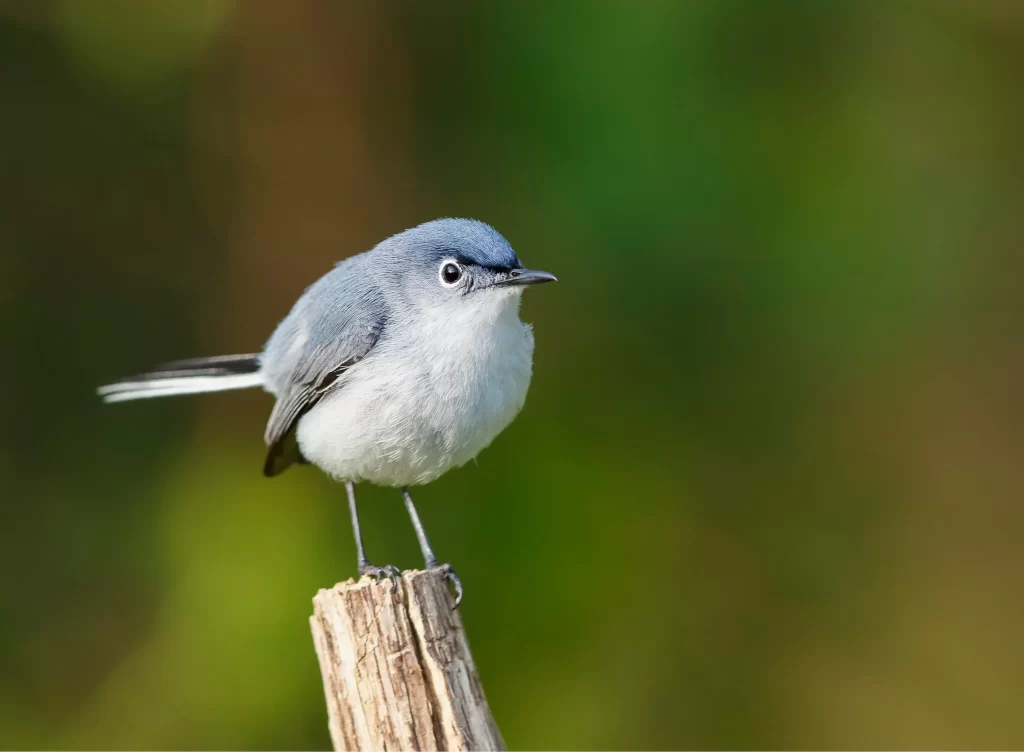
Blue-gray Gnatcatchers are small birds native to Florida. They are the smallest birds on this list, only measuring 3.9 – 4.25 inches long. Males in breeding plumage are a more vibrant bluish color than females, which often appear to be rather grayish overall. Also, note the black eyebrow of males in breeding plumage.
In addition to being petite, these tiny birds in Florida are quite active. Yes, Blue-gray Gnatcatchers are constantly hopping around trees or shrubs as they pursue a variety of insects to eat. This can make it difficult to get binoculars or a camera focused on them, but no one can argue that they aren’t entertaining to watch.
These backyard birds of the southeast breed in woodlots, forests, and backyards where deciduous trees are dominant. They will not eat from bird feeders, but these blue Florida birds will help you minimize the number of insects that frequent your backyard!
Carolina Chickadee
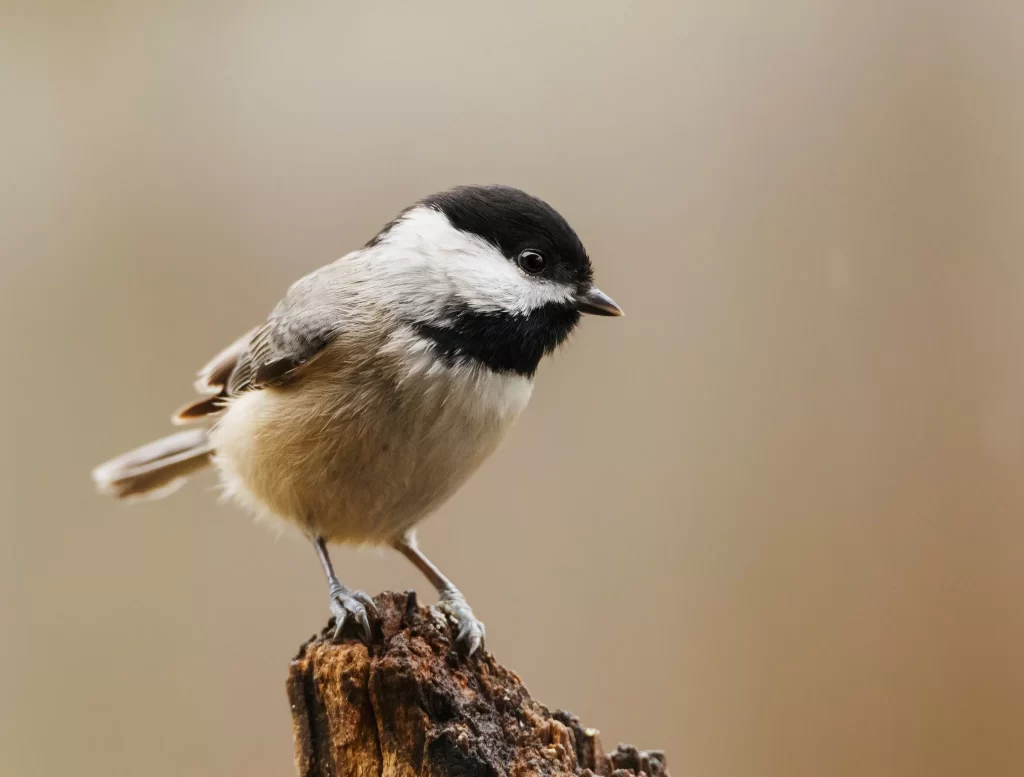
Carolina Chickadees are the 2nd-smallest Florida backyard birds that made this list, as their maximum length is about 4.7 inches long. Males and females are sexually monomorphic, meaning they look the same. Listening for the “fee-bee-bay” songs of these birds can help birders to locate them.
Although there have been more than 300,000 Carolina Chickadee observations in Florida as per eBird data, they should only be considered backyard birds of central Florida and north Florida birds. Indeed, Carolina Chickadees are largely absent in the state south of Tampa and Lakeland.
Despite their absence in much of the state, many are familiar with Carolina Chickadees thanks to their visibility in backyards. These tiny Florida birds readily eat from bird feeders. Moreover, Carolina Chickadees will nest in birdhouses that birders set out for them, but make sure the entrance hole is small enough to exclude House Sparrows and starlings.
Carolina Wren
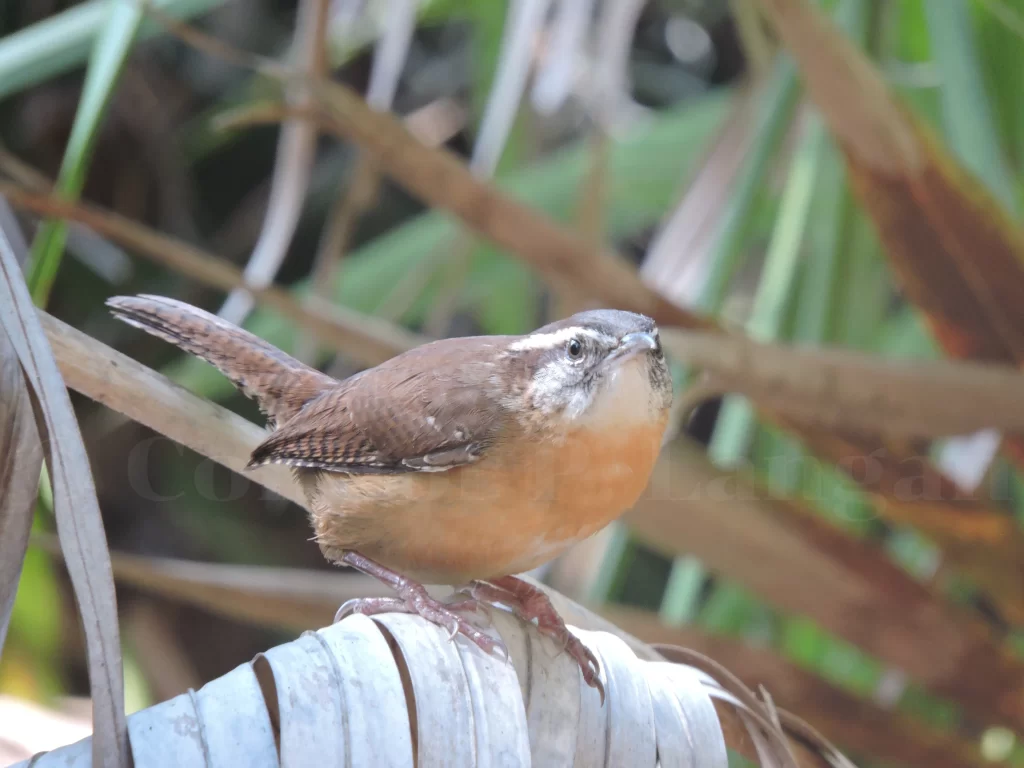
Carolina Wrens are sizable as far as wrens are concerned, but they still only top out around 5.5 inches. Males and females are sexually monomorphic, and they are rather nondescript, small birds of Florida. However, their white eyebrows are a feature that makes these Florida backyard birds.
Carolina Wrens often keep a low profile, but you’ll know if they’re around your backyard thanks to the male’s melodic song which has a similar cadence to that of a Northern Cardinal. When not singing from prominent perches, these tiny brown birds in Florida may be foraging in dense understories of woodlots or forests.
Carolina Wrens occasionally visit suet feeders or bird feeders that offer mealworms, but they are typically not interested in eating seeds. They may build nests in birdhouses, but these Florida small birds might also construct nests in odd locations such as mailboxes, boots, flower pots, or grills.
Common Ground Dove
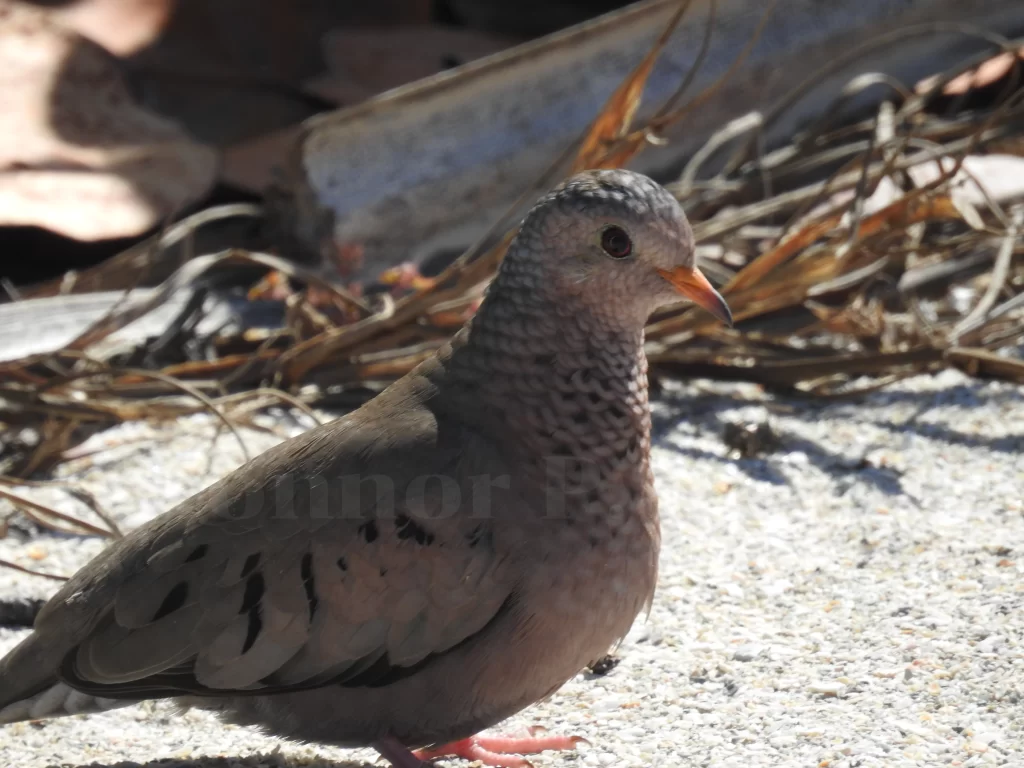
Common Ground Doves are petite doves of Florida. Although they are common throughout the state, their numbers tend to decline as one travels further north in Florida. They aren’t especially eye-catching, being little brown birds in Florida with scaly-looking feathers.
These small Florida birds do not seek wooded habitats like many of the other backyard small birds in Florida. Instead, they like open to semi-open areas with a few small trees and shrubs. Therefore, those who have sparse vegetation in their yards may readily observe Common Ground Doves. However, know that these backyard birds of Florida will want places to hide, as they are often targeted by Florida birds of prey.
These Florida backyard birds are rather social, often being found in the company of other Common Ground Doves. They may feed on spilled bird seeds below bird feeders, but they don’t tend to perch on the actual bird feeder structure. Most observations of this species involve birds that are strutting along the ground.
Downy Woodpecker
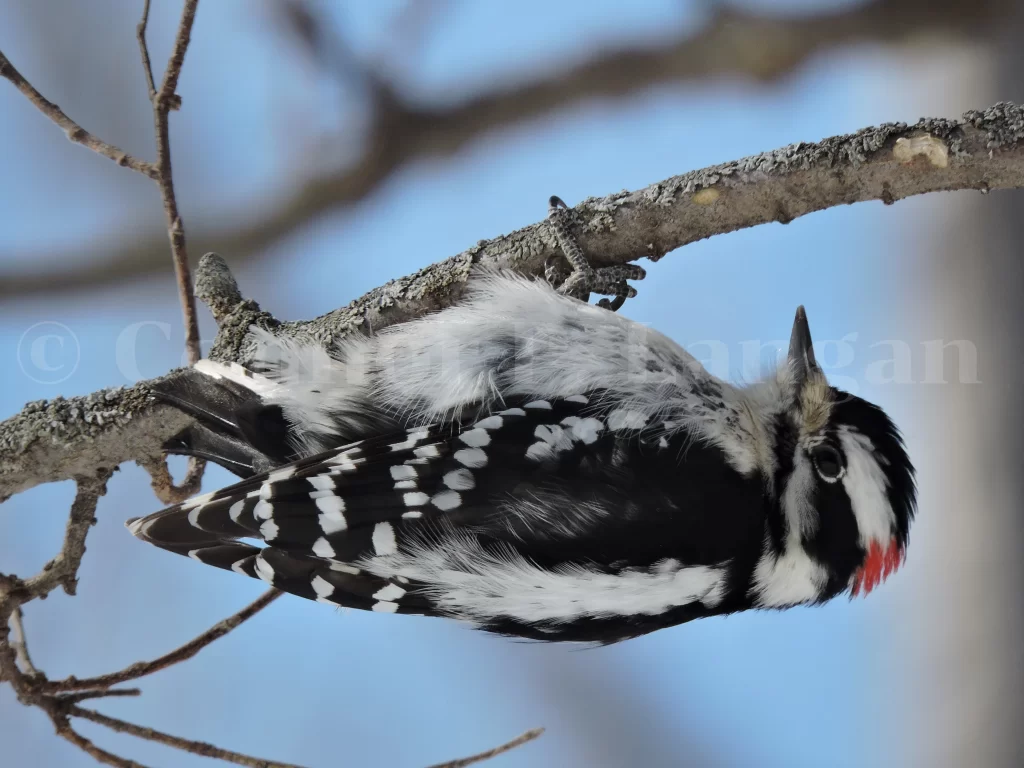
Downy Woodpeckers are the smallest woodpeckers in Florida. Indeed, they are the only woodpeckers tiny enough to be considered backyard small birds in Florida. Although they aren’t the most common Florida woodpeckers, there have still been more than 500,000 observations of these small black and white birds in Florida as per eBird data.
Like any woodpecker, Downy Woodpeckers need trees in which to forage and nest. However, they can get by with far fewer trees and shrubs than other Florida woodpeckers. Yes, these small birds of Florida may be found in backyards with scarcely any trees at all.
Downy Woodpeckers will visit bird feeders and suet feeders in backyards, but they’re also happy to forage within the trees and shrubs of a property. Birds frequently excavate cavities for them and their mates to use during the breeding season.
European Starling
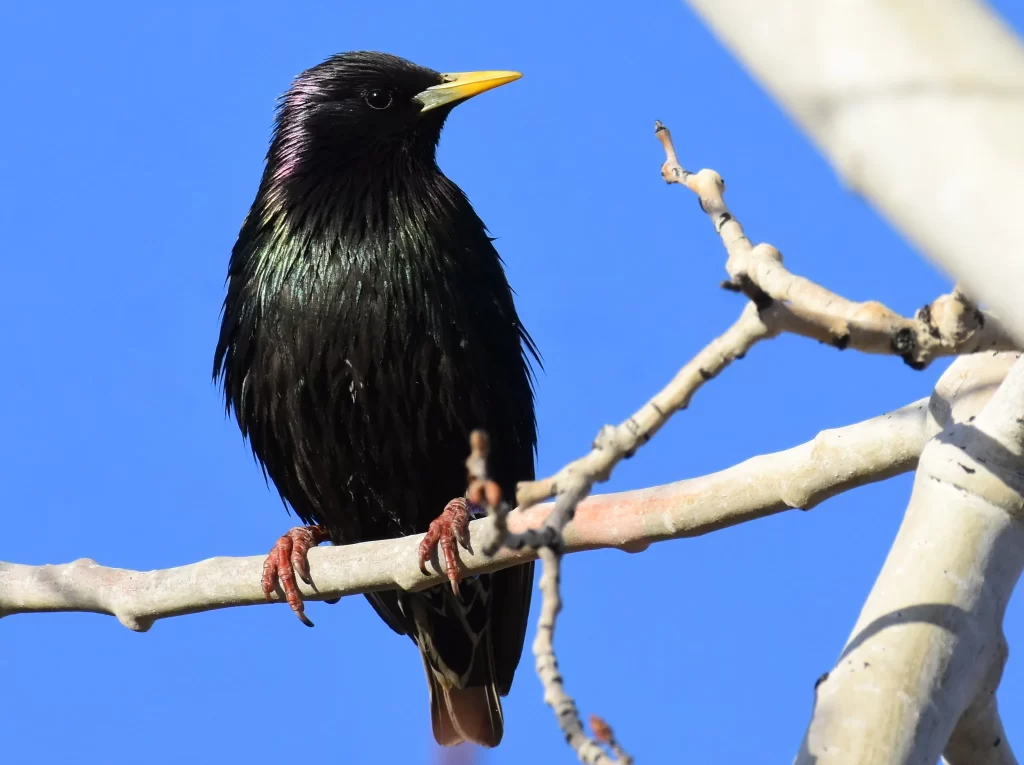
European Starlings are small black birds in Florida that are frequent residents in Florida backyards. Sexes are monomorphic, with both being a glossy black coloration overall. These Florida birds with long beaks have yellow bills in the breeding season and dark bills in the nonbreeding season.
Many confuse starlings and grackles with one another, as both have dark, glossy plumage and long bills. However, starlings lack the long tails of grackles. As you may have deduced by their names, European Starlings are not native birds in Florida. Therefore, some dislike it when these small Florida birds visit.
European Starlings are not polite backyard guests. Indeed, these invasive species frequently bully other backyard birds of Florida at bird feeders or birdhouses. European Starlings are very social, so they’re rarely seen without company. These obnoxious birds compete with parrots in Florida and other cavity-nesting birds for places to lay eggs.
House Finch
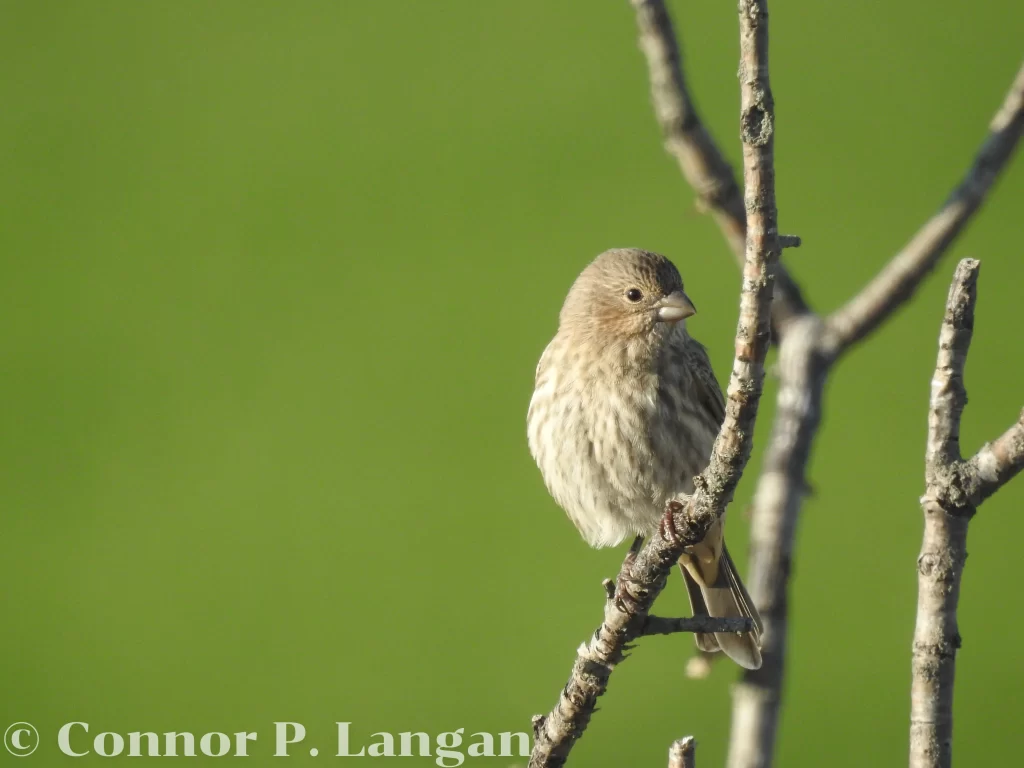
House Finches are the most common finches in Florida, and although they aren’t native to the Sunshine State, they are far more warmly received than starlings or House Sparrows. Male House Finches are backyard red birds in Florida, while females are small brown birds in Florida.
Separating a House Finch from a House Sparrow can be challenging for beginning birders in Florida. Although males are easy to separate, females look somewhat similar. Fortunately, House Finches often travel in pairs, so you can try to spot the red plumage of males.
House Finches enjoy eating sunflower seeds from bird feeders. These backyard birds of Florida do not nest in birdhouses, but they may nest in flower pots or shrubs within backyards. House Finches are progressively more common as one travels further north in Florida. They are uncommon south Florida backyard birds in areas south of Fort Myers.
House Sparrow
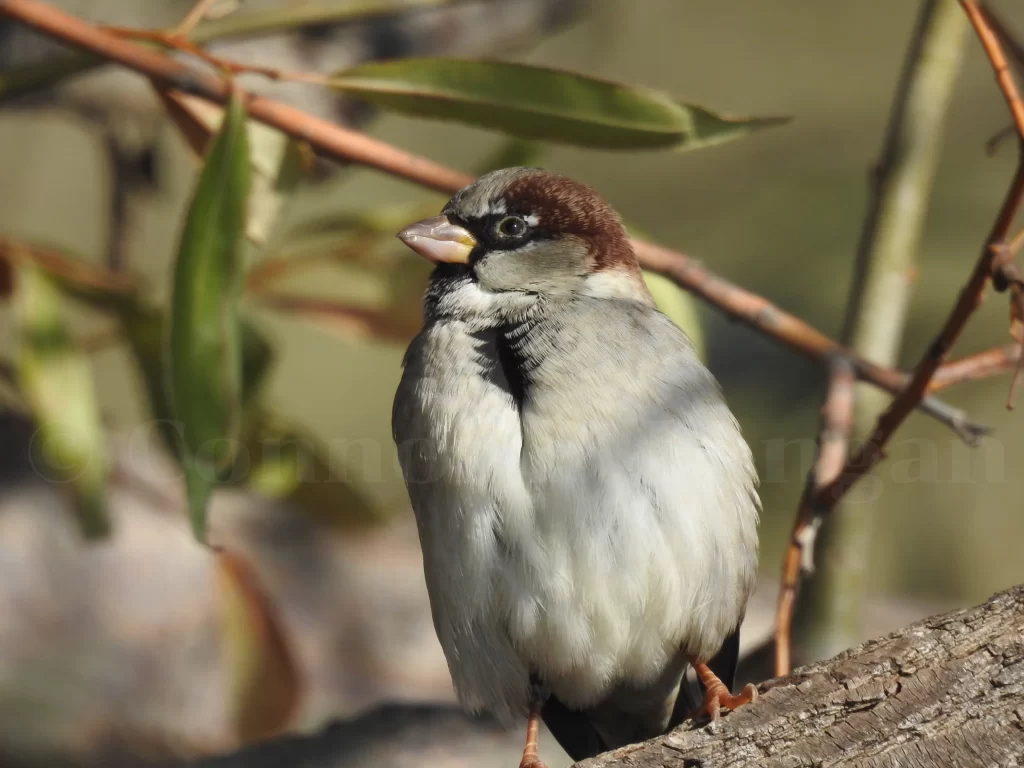
House Sparrows are a bird familiar to anyone in Florida. Fortunately for Floridians, these non-native Florida birds are not as common here as other states. Still, more than 120,000 have been reported to eBird from Florida. However, there are surely many more in the state, with many simply not caring to report these abundant birds.
House Sparrows are sexually dimorphic, with males being gray, black, and brown and females being brownish overall. House Sparrows thrive in urban areas where many other birds fail. Therefore, they may be the most recognizable birds for many Florida residents.
House Sparrows are considered by many to be bad birds due to their unsavory habitats of bullying and harassing other backyard small birds in Florida. Seeds make up the bulk of their diets, so they will—of course—visit bird feeders. Additionally, these small brown birds in Florida nest in birdhouses, but they can be excluded from many if the entrance hole is small enough.
Pine Warbler
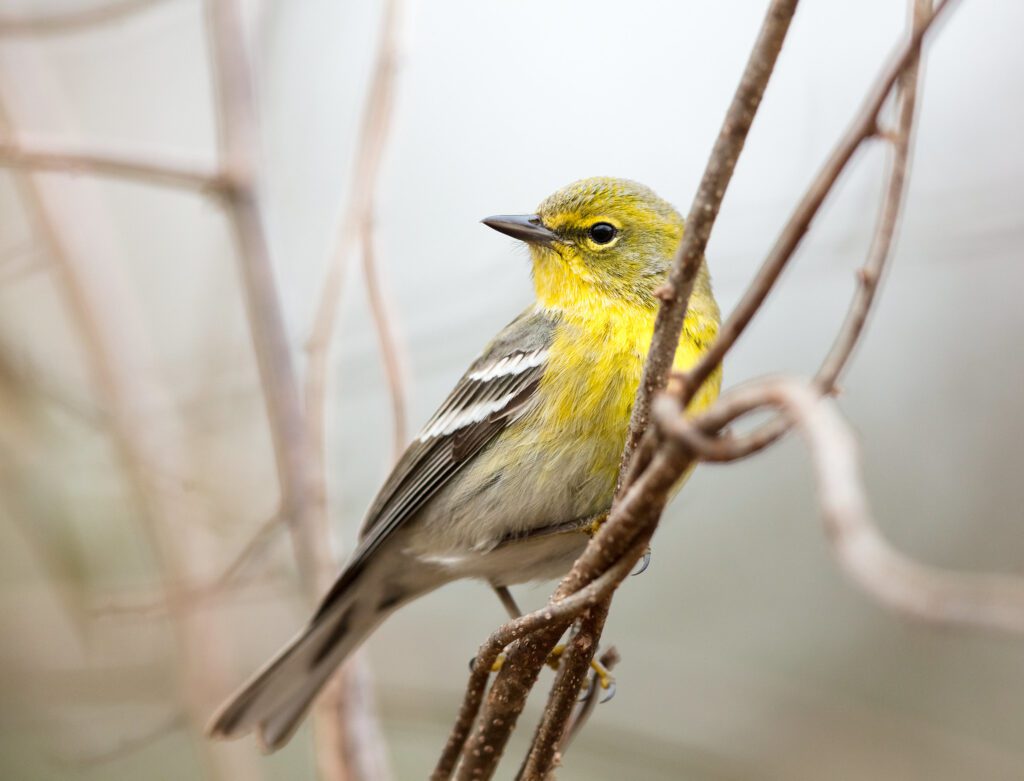
Pine Warblers are colorful Florida birds with blue, yellow, green, and white plumage. Males are the more vibrant of the two sexes, but females have the same colors within their plumage. Although they have a beautiful appearance, the songs of males do not match their visual aesthetic, being monotonous trills.
Pine Warblers are aptly named, as they frequent areas in which pine trees are abundant. This makes these little birds in Florida rather localized in the southern part of the state where pine trees are not as numerous. However, these common birds in Florida are often the most numerous warbler in northern Florida.
Those who have pines in or near their yards may host these Florida backyard birds. Pine Warblers may eat from suet feeders or bathe in bird baths, but they don’t tend to eat from typical bird feeders. Moreover, they don’t nest in birdhouses, but they may construct nests in pine trees.
Tufted Titmouse
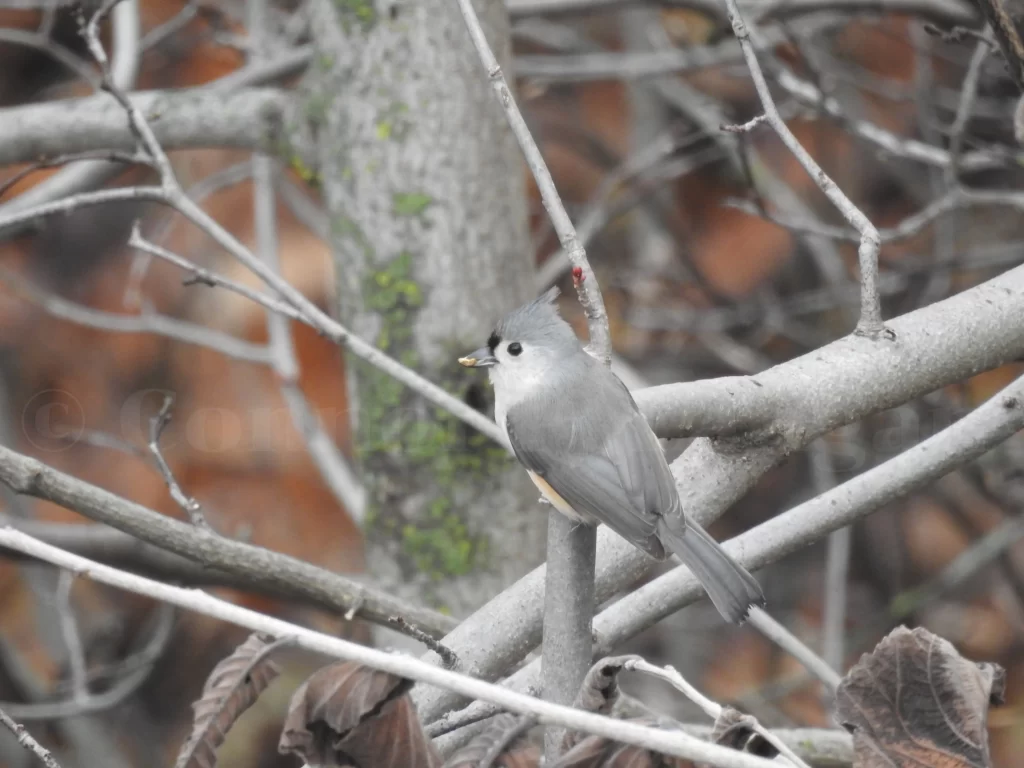
Tufted Titmice are endearing, sexually monomorphic backyard small birds in Florida. Much like Northern Cardinals, these creatures have crests on their heads. Tufted Titmice are gray overall with pale undersides and orangish flanks.
The “peter-peter-peter” songs of these birds fill woodlands throughout much of Florida. Although these Florida small birds aren’t as common in the southern part of the Sunshine State as they are in the more wooded northern part of the state, they can still be found here.
Tufted Titmice are pleasant visitors to backyards, as they interact well with other small Florida birds. These backyard small birds in Florida enjoy grabbing seeds from bird feeders and flying off to consume them elsewhere, as they can be rather shy. They are cavity-nesting birds, so they’re happy to make nests within birdhouses.

